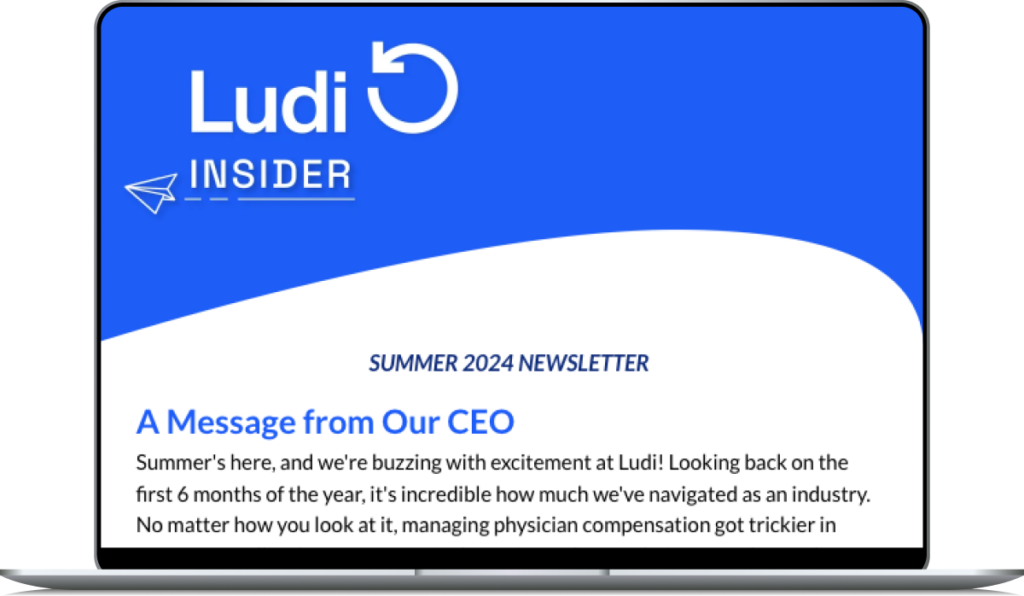Automation can be a boon to your hospital’s administration, as well as a major time saver. We all want technology to help us do our jobs better and faster. Yet, there are some misconceptions when it comes to automation, and, in particular, physician payment automation. At Ludi, we have found that the implementation process is when our clients start to see the true benefits of physician payment automation. Why? Because that’s when we sit down with them and flow chart how things work today and identify how current processes can improve with automation. It can be eye-opening.
Here are five misconceptions people often have about automating their physician payment processes, and how to bridge the gap between their expectations around automation and where the real benefit lies.
1. “I want to recreate our current process, but automated.”
We see this one a lot. You have been doing something a particular way for so long, it’s tempting to try to recreate that within the automation. Try to take a step back and ask yourself what your end goal is? The goal is to accurately capture physician time, process payments accurately and on-time and stay compliant.
Physician payment automation offers the opportunity to streamline and remove steps from today’s manual processes that do not add value. We might see time logs being signed by five or six people before processing. Physician payment automation provides the opportunity to identify who is doing what and why, and hopefully streamline to two or three signatures on each payment. The goal is not to recreate each step you did in a paper-based process but to identify opportunities to be more efficient.
2. “I want to hold on to old or current processes because they just seem easier.”
Again, you have to reorient your thinking for this one! Start by flow charting your current payment process, and then see where you can leverage it to fit your needs. For instance, today each physician payment may require a check request. Using automation, one report can be pulled at the end of the period, making it faster for finance to process. With Ludi’s DocTime® technology, for example, you can batch those check requests and make that part of the process a breeze. One of our clients in this scenario hadn’t even considered this option because they were stuck pulling individual check requests. But, during the implementation period with our DocTime solution, all of that changed because they could see all the ways they could become more efficient.
3. “I want to see the data a certain way.”
We realize you had a system before you automated. Perhaps you had done everything in your power to make sure your paper-based system was organized and easy to understand for you and your physician partners. Physician payment automation will take you a long way and help you achieve your goals, but it may look different than the old system.
Perhaps you had a specific payment calendar or shift calendar you kept before things were automated. Or, maybe you like to use a specific spreadsheet or database to help you process provider compensation. While this may have worked for your old process, you cannot expect to recreate the look and feel when you move to automation. You know how each time you update your smartphone, a few things look different or function in a new way? It’s jarring at first, but within days (sometimes hours), you acclimate and learn the new system. Automation is similar. It may look different at first, but within a short period of time it will seamlessly integrate into your business operations.
4. “I don’t have time now to deal with a new automated system.”
It’s an age-old question: do you spend time and resources now to save time and resources later? We say YES. We’ve worked with countless hospitals to automate their physician payments and the feedback we hear most is, “I wish we’d done this sooner.” Of course, the savings down the road will be great, but you should also invest in automation today to stay compliant and reduce administrative burden on your teams, including your physician partners.
5. “I don’t want to get other departments involved.”
We get it. You are part of a small-but-mighty team that is bringing your hospital into the 21st Century! We’re grateful to have people championing automation from within the hospital administration. But, you also need to spread the word and bring other departments onboard to the cause. If payroll doesn’t buy into the automation, you will be missing an important component and the system won’t work optimally. Same with the legal team or physician leadership. Take the time to involve other departments in the decision and let them feel some ownership – this will help stave off resistance to change.



